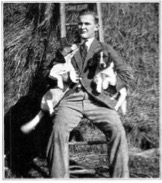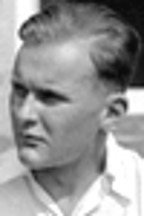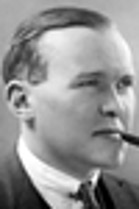Reginald Gilbert Squarey Morgan-Weld-Smith

| Rank: | Wing Commander |
| Regiment: | Royal Air Force, 59 Squadron Coastal Command |
| Country: | France |
| Service Number: | 05224 |
| Cemetary/Memorial: | St Pierre-en-Port Communal Cemetary |
| Awards: | 1939-1945 Star 1939-1945 War Medal Mentioned in Despatches |
Born 1911 in Middlesex, Wing Commander Morgan-Weld-Smith was killed on 1st August 1940, during the Battle of Britain. His body was washed ashore in St Pierre, France. He was 29.
The elder son of Reginald Morgan (1875-1964) and Mita Drinkwater Morgan-Weld-Smith (nee Carver, 1882-1962) of Wiltshire. He changed his last name from Morgan-Smith to Morgan-Weld-Smith by deed poll of 28th November 1938. He was brother Jocelyn (b. 1907) and Catherine (b.1910) and Rupert (b. 1919).
In 1936 he married Joan Niven (d.1993) at All Saints, Marden, Wiltshire.
Their daughter, Clare, was born after his death on 22nd December 1940 in Devizes, Wiltshire.
Reginald was a pupil at St Ronan’s from 1920 to 1925. He returned to visit the school in 1930 and 1931. He attended the Old Ronians’ Dinner in 1925 and 1928. His brother, Rupert, also attended the school.
He gained a scholarship to Wellington, where he entered the Combermere in 1925. Rupert went on to Abinger Hill.
Following Wellington, Reginald went up to Pembroke College, Cambridge to study History, in 1929, where he joined the University Air Squadron. He was commissioned in 1932, when he was posted to an Army Co-operation squadron and became Personal Assistant to Air Marshal Sir Charles Burnett, Commanding the Inland Area. In December 1938, he joined the Headquarters of an Army Co-operation Group and in 1939 he joined the Staff of Air-Marshal Blount in the Advanced Air Striking Force. He was mentioned in dispatches and after the Dunkirk evacuation, commanded No. 59 Squadron, Coastal Command. He was killed on operations in the Battle of Britain, flying Blenheim IV, L8792, which failed to return from a raid on Cherbourg on 1st August 1940.
RAF Photographic Reconnaissance Unit Spitfire pilots whilst carrying out a patrol over northern France, had noticed heavy German aircraft concentration at Cherbourg. After circling round the enemy held airfield and filming same they returned back to base, and Fighter Command were notified at once of the build up. Fighter Command controllers then decided that the airfield at Cherbourg should be bombed before the aircraft there can be used in attacks on Great Britain.
Commander Morgan-Weld-Smith’s squadron was allotted the task of carrying out the raid on Cherbourg, and these would be escorted by 236 Squadron Thorney Island (long range Blenheim fighters). Ground crews begin to load up the thirteen Blenheim bombers with the required bomb loads while ten Blenheim fighters were prepared and placed at readiness.
At 1500 hours Blenheim bomber L8792 TR-A took off from R.A.F. Thorney Island, Hampshire, it being one of the thirteen bombers assigned to the raid. At 1540 hours a break in the cloud appeared just as the Blenheim bombers of the squadron approached the French coast on course, and the aerodrome on the peninsula could be seen by the crews as they commenced their bombing runs. Not far behind the bombers were the second wave of three 236 Squadron, RAF Blenheim fighters, which was also lost on the raid. 59 Squadron managed to drop their bombs successfully causing considerable damage amidst heavy Anti-Aircraft and machine gun fire from the aerodrome gun emplacements. Commander Morgan-Weld-Smith’s
The excerpt below from www.battleofbritain1940.net details the mission flown on that day:
"Returning to Thorney Island, the crews are briefed about the mission, and it undergoes scrutiny. Itself, it was a success, considerable and severe damage had been done, but at a price. One of the Blenheim's of 59 Squadron fails to return, it was piloted by the squadron commanding officer Wing Commander Weld-Smith. Two Blenheim's of 236 Squadron also fail to return. A number of Bf109's of III/JG27 got into the air and could have been responsible for shooting down the Blenheim's of P/O McDonough and S/L Drew, or they may have been hit by gunfire from ground defences"


Rupert also served and survived the War, as a Lieutenant in the Indian Army.
